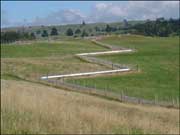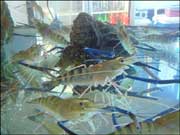2. History of the Wairakei Borefield
Before
1950 the Wairakei Geothermal Field had 20 geysers, springs, mud pools
which produced about 30 000 tonnes of hot water each day. A lot of work
and development has happened since 1950.
In the 1950's the NZ Government started development in the Wairakei area by drilling 20 wells. These wells were to search for steam to generate electricity.
The reasons for the development were
- dry years meant poor hydro electric generation and power shortages
- few places left in the North Island to build dams.
- The government did not want to build coal fired power stations, partly because of unions at the time.
- the rainfall does not affect the supply of hot water and steam
- the 'unused' area of land was already Government owned
- the land was flat and easy to travel over
- the Waikato River was nearby with lots of cold water. This water is useful for the steam condensers at the power station.
Wairakei was the second geothermal power plant in the world when it started in 1958. Growth was continuous until the building of the last turbine in 1963.
Development of the field continued until the installation of the last turbine in 1963.
By the 1980's the removal of steam and hot water had resulted in these changes
- a large pressure drop
- the pressure drop allowed cool underground to enter
- the cool water lowered the temperature from 250 degrees C to 200 - 230 degrees C
This was a problem because it is the temperature that determines the amount of steam available.



